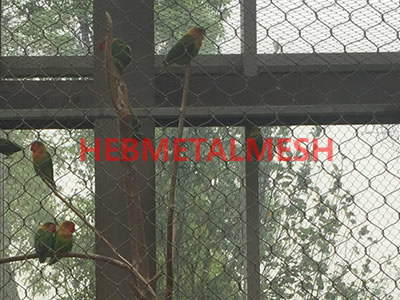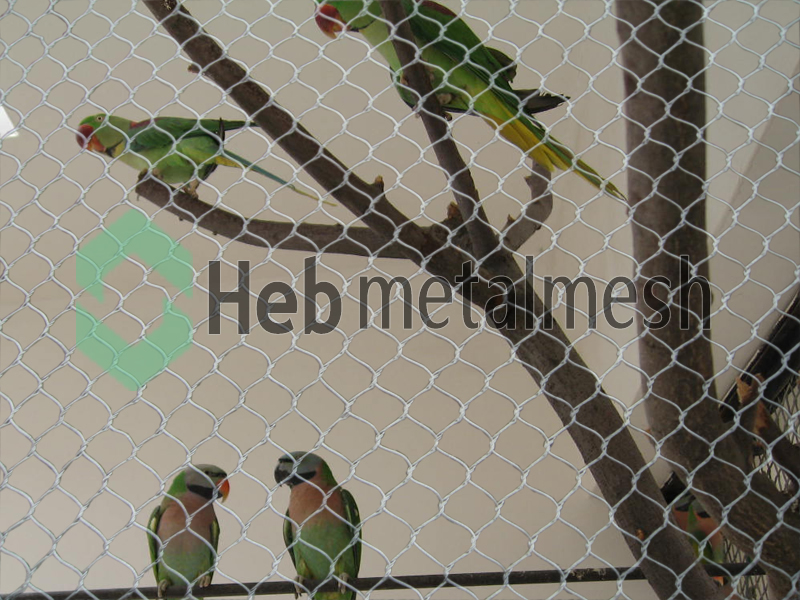As a gardener, I know how important it is to protect my plants from various pests and wildlife. One of the most common problems that gardeners face is birds eating their fruits and vegetables. Fortunately, there is a simple solution to this problem – bird netting. In this comprehensive guide, I will provide you with all the information you need to know about bird mesh, including its benefits, types, how to install it, and more.
Introduction to Bird Netting
Bird netting is a physical barrier used to prevent birds from accessing your garden. It is made of a lightweight and durable material, usually polyethylene or polypropylene, and comes in different mesh sizes and colors. Bird mesh can be draped over plants, trees, or entire garden beds. It is an effective way to protect your crops from birds without harming them.

Benefits of Bird Netting
Bird netting has several benefits for gardeners. First and foremost, it protects your crops from birds. Birds can cause significant damage to fruits and vegetables, and bird mesh is an effective way to prevent them from doing so. Additionally, bird mesh is easy to install and remove, making it a convenient solution for gardeners. It is also an environmentally friendly option, as it does not harm birds or other wildlife.
Another benefit of bird mesh is that it can be used to protect your garden from other pests, such as squirrels, rabbits, and deer. Bird mesh can also protect your garden from harsh weather conditions, such as hail and heavy rain. Overall, bird mesh is a versatile and effective solution for protecting your garden.
Types of Bird Netting
There are several types of bird wire available on the market. The most common types include:
Standard Bird Mesh
Standard bird netting is the most common type of bird mesh. It is made of lightweight and durable material and comes in different mesh sizes and colors. Standard bird wire can be draped over plants, trees, or entire garden beds. It is an effective way to prevent birds from accessing your crops.
Knitted Bird Netting
Knitted bird netting is a more durable and stronger type of bird mesh. It is made of high-density polyethylene and has a knitted construction that provides better protection against birds. Knitted bird wire is more expensive than standard bird mesh but is a good option for larger gardens or commercial farms.
Woven Bird Netting
Woven bird netting is the strongest and most durable type of bird mesh. It is made of heavyweight polyethylene and has a woven construction that provides maximum protection against birds. Woven bird cage mesh is more expensive than the other types of bird mesh but is a good option for gardens that need extra protection.
Choosing the Right Wire Mesh for Your Garden
When choosing bird mesh for your garden, there are several factors to consider, including the size of your garden, the type of crops you are growing, and the type of birds you are trying to keep out. Here are some tips to help you choose the right bird wire mesh for your garden:

Consider the Size of Your Garden
If you have a small garden, standard bird netting may be sufficient to protect your crops. However, if you have a larger garden or commercial farm, you may need a stronger and more durable type of aviary mesh, such as knitted or woven wire mesh.
Consider the Type of Crops You Are Growing
If you are growing small crops, such as strawberries or blueberries, you may need a finer mesh size to prevent birds from accessing your crops. However, if you are growing larger crops, such as tomatoes or cucumbers, you may need a larger mesh size to allow for adequate air circulation.
Consider the Type of Birds You Are Trying to Keep Out
Different types of birds require different types of bird netting. For example, smaller birds may be able to access your garden through larger mesh sizes, while larger birds may require stronger and more durable bird mesh.
How to Install Bird Netting
Installing bird mesh is a simple and straightforward process. Here are the steps to follow:
Step 1: Measure Your Garden
Measure the area you want to cover with bird wire. This will help you determine the amount of aviary mesh you need to purchase.
Step 2: Purchase the Bird Netting
Purchase the wire mesh that best suits your needs. Make sure to choose a size that fits your garden and a mesh size that prevents birds from accessing your crops.
Step 3: Install the Support System
Install a support system for the bird netting. This can include stakes, poles, or a frame. Make sure the support system is sturdy and secure.
Step 4: Drape the Bird Netting
Drape the wire mesh over the support system, making sure it covers your plants or garden bed completely. Secure the aviary mesh to the support system with clips or ties.
Tips for Maintaining Bird Netting
To ensure that your bird mesh lasts for a long time and provides effective protection for your garden, here are some tips for maintaining it:
Regularly Inspect the Bird Netting
Regularly inspect the bird mesh for any tears or holes. If you notice any damage, repair it immediately to prevent birds from accessing your crops.
Clean the Bird Netting
Clean the aviary mesh regularly to remove any debris or dirt that may accumulate on it. This will help prevent damage and ensure that it lasts longer.
Remove the Bird Netting During Harvest
Remove the wire mesh during harvest to prevent damage to your crops and to make it easier to harvest your fruits and vegetables.
Alternatives to Bird Netting
While birdnet is an effective way to protect your garden from birds, there are other methods you can use as well. Here are some alternatives to aviary mesh:
Scare Devices
Scare devices, such as fake owls or snakes, can be effective in deterring birds from your garden. However, they may not work for all types of birds and may require frequent repositioning to be effective.
Bird Repellents
Bird repellents, such as sprays or gels, can be effective in deterring birds from your garden. However, they may need to be reapplied frequently and may not be effective for all types of birds.
Physical Barriers
Physical barriers, such as fences or cages, can be effective in preventing birds from accessing your garden. However, they can be expensive and may not be practical for larger gardens or commercial farms.
Frequently Asked Questions About Bird Netting
Is Bird Mesh Harmful to Birds?
No, bird netting is not harmful to birds. It is a physical barrier that prevents birds from accessing your garden, but it does not harm them.
How Long Does Bird Netting Last?
Bird netting can last for several years if properly maintained. However, the lifespan of bird mesh depends on several factors, such as the type of mesh and the weather conditions.
Can Bird Netting Be Used for Other Purposes?
Yes, bird netting can be used for other purposes, such as protecting fish ponds or preventing birds from nesting in certain areas.
Where to Buy Bird Netting
Bird mesh can be purchased at most garden centers or online retailers. Make sure to choose a reputable retailer and read reviews before making a purchase.
Conclusion
Bird netting is an effective and environmentally friendly way to protect your garden from birds and other pests. By choosing the right type of bird mesh and following proper installation and maintenance procedures, you can ensure that your garden remains healthy and productive. If you have any questions about aviary mesh or need help choosing the right type for your garden, don’t hesitate to reach out to a gardening professional or retailer.

